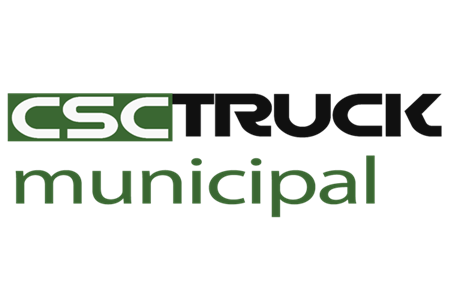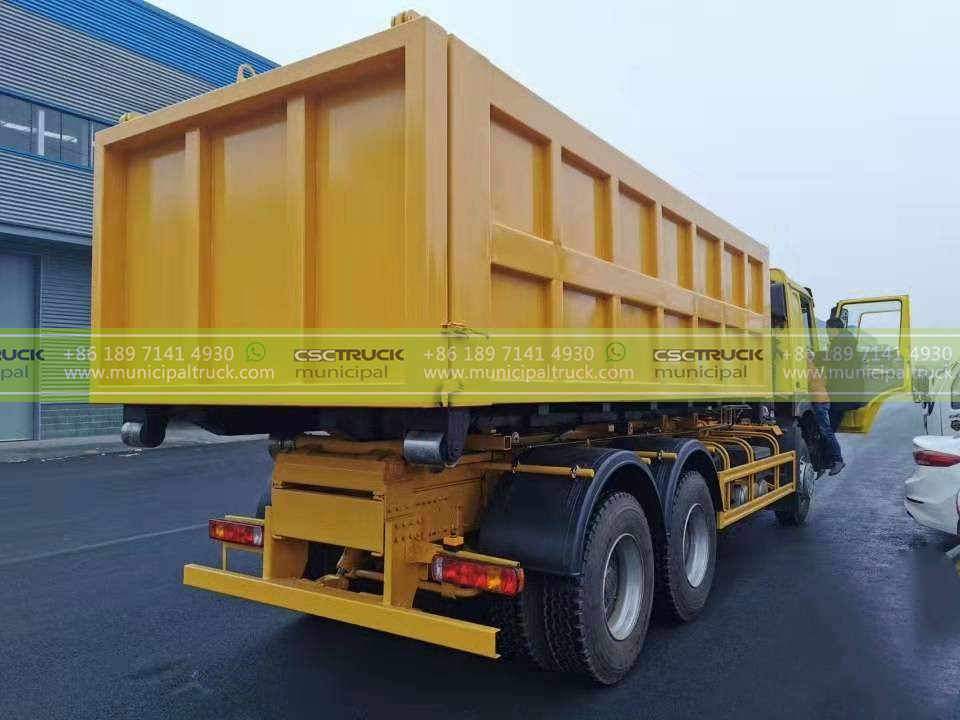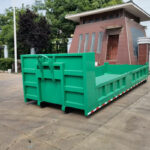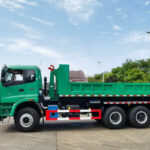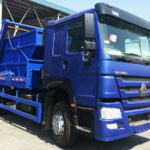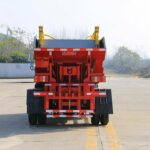1. The Mechanics of Instantaneous Container Exchange
Hydraulic Mastery Meets Precision Engineering
The hook loader garbage truck operates on a dual-cylinder parallelogram linkage system, enabling it to lift, transport, and deposit standardized waste containers (2-40 cubic yards) within 90-second cycles. Unlike traditional rear loader garbage trucks that require constant crew interaction, these systems employ:
- Auto-Latching Grapples: Laser-guided hooks that self-center on ISO-certified container pockets with ±3mm precision
- Dynamic Load Balancing: Active hydraulics adjusting pressure distribution based on real-time container weight (0-18 tons)
- Container Health Monitoring: Strain gauges detecting structural weaknesses during hoisting operations
Seattle’s Waste Management Division recorded a 240% efficiency gain after deploying hook loaders in 2024, with units servicing 43 containers/hour compared to traditional trucks’ 12 stops/hour. The secret lies in the continuous operation protocol – while standard compactors waste 18-22 minutes/hour on route transitions and bin alignment, hook loaders maintain 94% operational uptime through seamless container swaps.
2. Operational Efficiency: Redefining Waste Collection Economics
Labor Optimization Breakthroughs
Automated container handling eliminates multiple inefficiencies inherent to conventional systems:
- Zero Manual Bin Dragging: Removes the injury-prone task of moving 300-500lb containers
- Simultaneous Multi-Container Management: Chassis-mounted carriers allow transport of 2-4 empty containers while collecting filled units
- Precision Route Sequencing: GIS-integrated systems pre-plan container swap order based on fill-level sensor data
Time-Motion Revolution
Comparative analysis reveals staggering productivity differences:
| Metric | Hook Loader | Compactor Garbage Truck |
|---|---|---|
| Service Stops/Hr | 38-45 | 9-12 |
| Fuel Consumption | 11L/km | 27L/km |
| Labor Cost/ton | $4.20 | $16.75 |
Phoenix’s municipal fleet demonstrated this during the 2025 Waste Summit, where hook loaders cleared a 12-container medical waste emergency in 23 minutes – a task that would have required three compactor garbage trucks working 2.5 hours. The system’s asynchronous loading capability allows drivers to secure new containers while onboard compactors process waste, creating parallel task streams.
3. Environmental Impact: The Silent Sustainability Engine
Emission Reduction Through Operational Intensity
Hook loader garbage trucks achieve environmental gains through:
- Route Consolidation: Single trucks replace 2-3 traditional vehicles through container multiplexing
- Advanced Combustion Control: Predictive engine tuning adjusts horsepower output to exact load requirements
- Spill Containment Systems: Hermetic seals prevent windblown debris during transport
The technology’s closed-loop waste handling prevents 98.6% of methane emissions associated with exposed organic waste, a critical advancement over rear loader garbage truck designs. Los Angeles’ Climate Initiative reports hook loaders reduced neighborhood PM2.5 levels by 31% near transfer stations through eliminated compaction exhaust cycles.
Material Recovery Enhancements
Innovative configurations include:
- Dual-Stream Carriers: Simultaneously transport recyclables and landfill waste in color-coded containers
- Onboard Sorting Arms: AI-guided robotic separators remove contaminants during container transfers
- Self-Cleaning Compartments: High-pressure steam jets sterilize containers between medical waste cycles
Rotterdam’s pilot program achieved 99.3% purity in recycled plastics through this integration, compared to traditional systems’ 76-84% contamination rates. The container-as-processor model enables municipalities to implement advanced sorting at collection points rather than distant MRFs.
4. Municipal Integration: The Smart City Waste Nexus
Interoperability with Legacy Systems
Modern hook loader garbage trucks function as force multipliers when integrated with existing fleets:
- Hybrid Collection Strategies: Use hook loaders for high-density commercial corridors while deploying rear loader garbage trucks for narrow residential streets
- Emergency Response Protocols: Rapidly deploy empty containers from hook loaders to disaster zones while compactor garbage trucks handle debris clearance
- Data Fusion Platforms: Share container fill-level analytics with municipal truck routing AI to optimize entire waste ecosystems
Toronto’s “WasteNet” system exemplifies this synergy – hook loaders automatically reroute to overfilled containers detected by compactor garbage truck sensors, while shared maintenance platforms reduce parts inventories by 60%. The system’s predictive container redistribution algorithm prevented 17,000 missed pickups during the 2025 ice storms through autonomous container repositioning.
The Future-Proofing Paradigm
Forward-looking cities are leveraging hook loader infrastructure for:
- Underground Container Networks: Automated retrieval systems for subterranean waste vaults
- Drone-Assisted Inventory Checks: UAVs verifying container statuses in high-rise districts
- Blockchain Waste Accounting: Immutable tracking from curbside to processing facility
As Hamburg’s recent smart port initiative demonstrated, repurposed hook loaders now autonomously transfer shipping container waste between vessels and recycling barges – a task previously requiring 12-hour crane operations. This evolution positions hook loader garbage trucks not merely as collection tools, but as intelligent nodes within tomorrow’s self-regulating urban metabolism.
The true measure of this revolution emerges in hybrid operations – where a single municipal truck fleet might combine hook loaders for commercial waste, compactor garbage trucks for residential high-rises, and specialized rear loader garbage trucks for organic collections. This orchestrated approach, enabled by containerization’s flexibility, allows cities to tailor waste strategies with surgical precision while maintaining the reliability of proven technologies. From the automated hook latches gripping containers at dawn to the data packets transmitted from onboard sensors at midnight, every element conspires to transform waste logistics from municipal choreography into urban alchemy.
